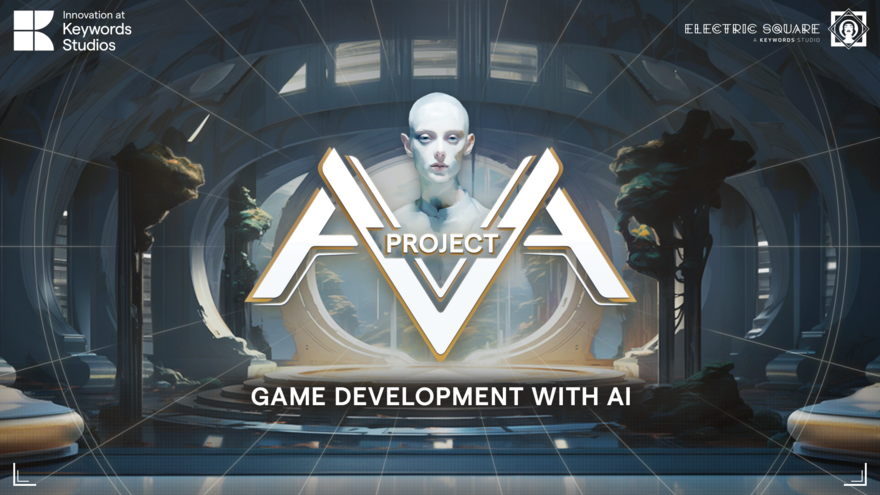Creating Customer Loyalty Through Player Engagement
Sharon Fisher leads the Global Trust and Safety department at Keywords Studios. As part of Player Engagement, her expert global moderation teams create processes, integrate tools, consult and interact with players to make sure the online experience is fun and inclusive.

In the ever-evolving world of game development, one concern haunts the minds of developers: how can we effectively retain players and reduce churn? This enduring question has left many in the industry feeling a shared sense of unease.
For most developers, attention is typically fixed on the in-game factors that influence player engagement, such as innovative game design, meticulous mechanics, seamless user experience, captivating objectives, intuitional controls, and immersive storylines.
However, one vital element of an engaging video game is often overlooked — human interaction.
At Keywords Studios within our Engage service division, we’ve identified three human-centered strategies that can have a big impact on player engagement and retention – and they are often the last things that developers consider when creating new games.
Below, we’ll delve into three player engagement strategies that game developers should consider when creating new games and explore how they contribute to customer loyalty in video games.
What is the role of player support in creating customer loyalty?
Game developers who are considering out-of-the-box retention tactics should not neglect player support. Great support is one of the key drivers for the success, reputation, and longevity of a game following its launch.
Investing resources in robust player support from the outset can yield significant returns down the line.
As a starting point, instead of waiting until launch to embed a SaaS tool like Helpshift into a game, we recommend bringing the player support department into discussions during the development phase. Developers can focus on building a compelling game while working with customer service experts to find the best-fit support solution for the game's use case.
Additionally, support should be provided where customers are already interacting. It’s essential that developers embed support mechanisms directly into the game, ensuring that players can easily access assistance whenever needed – without ever needing to exit the game.
Lastly, the key to excellent player support that serves to foster customer loyalty is human connection. Once the right solution has been embedded into the game, it’s critical that support agents provide personalized, empathetic, and efficient assistance to players.
What is the role of social features and community in creating customer loyalty?
Building a community in-game is another effective strategy for retaining players. According to Unity's 2023 gaming report, more than half of all large studios build social features into their games as a retention tactic.
Developers should therefore consider including social features that allow players to share their achievements and form deep connections. Features like activity feeds, leaderboards, multiplayer options, events/tournaments/competitions, guilds/clans, and integrated chat systems are great for improving retention as they allow players to connect and learn from each other on the platform. These shared experiences not only deepen player engagement but also foster a sense of investment and attachment to the game, making it more likely that players will continue to be loyal advocates and participants.
Developers can also consider creating official communities on platforms like Discord or Twitch. These platforms enable players to share their experiences, achievements, and insights beyond the game. This expanded sense of community doesn't just enhance player engagement; it’s a powerful catalyst for organic word-of-mouth marketing - an excellent strategy for lowering the cost of acquisition.

What is the role of Trust & Safety in creating customer loyalty?
Social features and community building are key retention-building strategies, but they come at a cost: Gamers today expect a harassment-free experience.
According to another Unity report, 77% of multiplayer gamers say that protecting players from abusive behavior should be a priority for game developers, and 67% say they would even stop playing if another player were exhibiting abusive behavior.
Players aren’t the ones demanding safe online spaces. Legislation like the EU's Digital Strategy Act and the Online Safety Bill in the UK have made protecting gaming communities from harmful and illegal content a top priority for developers.
Game developers can benefit from incorporating Trust & Safety measures early in the development cycle by having experts on hand to advise them on how social features can encourage positive play. This can help ensure that the game experience remains immersive and engaging while fostering healthy community interactions.
Building games with enhanced player engagement in mind
Game developers are rightfully focused on key aspects of gameplay like game design and narrative. But they shouldn't forget that human interaction can be another key to engaging players and fostering customer loyalty.
Human-focused engagement strategies such as excellent player support, social features and community building, and robust moderation techniques are crucial for game developers. When these strategies are thoughtfully incorporated into game development, they create an impact on player engagement and inspire long-term player loyalty.
By creating games that foster positive experiences among players and providing safe and inclusive environments, developers can create long-lasting relationships with the gaming community that benefit both parties.
In the competitive world of gaming, these strategies could mean the difference between success and obscurity, so it is imperative for game developers to prioritize them in their development plans.







